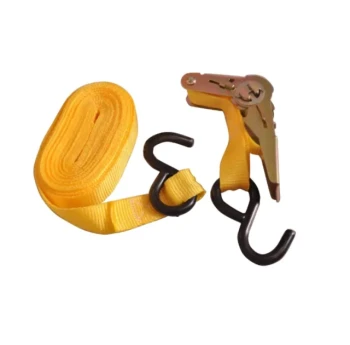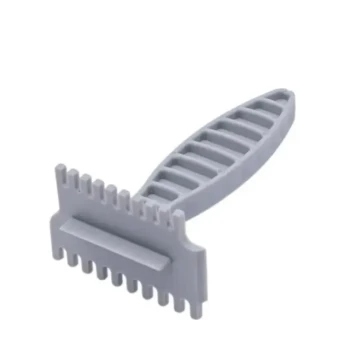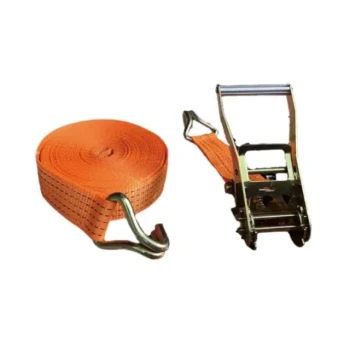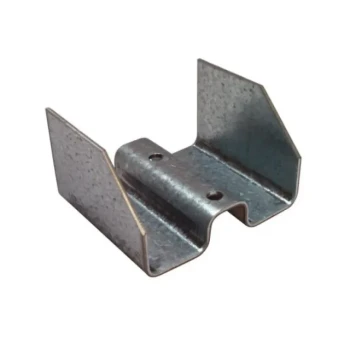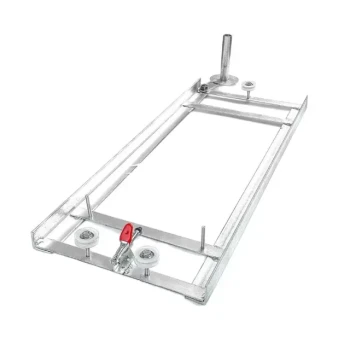The most effective and common method for cleaning wooden beehive components is to use washing soda (sodium carbonate) dissolved in very hot water. This alkaline solution is highly effective at breaking down and dissolving the stubborn propolis and beeswax that accumulate over a season. The process leaves the wooden ware exceptionally clean and ready for reuse.
The core principle of hive cleaning is not about using soaps or detergents, but about physically removing debris and sterilizing the equipment to break disease cycles. The right method depends entirely on whether you are doing a routine clean or addressing a specific pathogen threat.
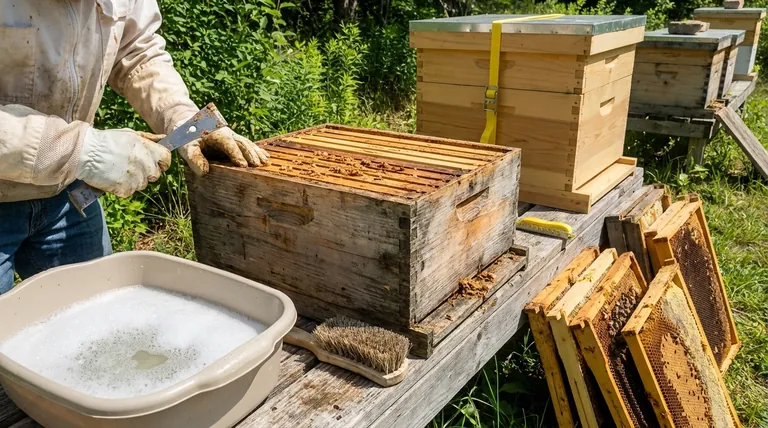
Why Hive Cleaning is Critical for Colony Health
Properly cleaning your equipment between seasons or after a colony has died out is a fundamental practice in beekeeping. It directly impacts the health and productivity of the next colony that occupies the hive.
Preventing Disease Transmission
Old comb and propolis can harbor pathogens like bacteria, fungi, and viral particles. Spores for serious diseases like American Foulbrood (AFB) can remain viable in old equipment for decades, making sterilization essential if disease is suspected.
Eliminating Pest Hideouts
Pests like wax moths and small hive beetles lay their eggs in the cracks and crevices of hive components. A thorough cleaning removes these pests and their larvae, preventing a future infestation from taking hold in a new or weak colony.
Preparing for a New Colony
A clean hive provides a fresh start for a new package, nuc, or swarm. It ensures the bees can focus their energy on building comb, raising brood, and storing resources rather than fighting off legacy diseases and pests.
The Standard Cleaning Process: Washing Soda
The use of washing soda is the industry standard for a deep clean on wooden hive bodies, bottom boards, and inner covers.
The Step-by-Step Method
First, use your hive tool to scrape off as much excess wax and propolis as possible. This physical removal does most of the heavy lifting.
Next, dissolve washing soda crystals in a large tub of very hot water. You need to keep this solution hot to ensure it remains effective.
Submerge the hive components completely in the hot solution and let them soak. After a soak, use a stiff brush to scrub away any remaining residue.
Finally, rinse the equipment thoroughly with clean water to remove all traces of the washing soda solution. Allow the components to dry completely in the sun, which also provides a sterilizing UV benefit.
Why This Combination Works
Washing soda creates a strong alkaline solution. Propolis and beeswax are complex, slightly acidic substances that are resistant to water alone. The alkalinity of the washing soda solution effectively breaks them down, allowing them to be washed away.
Understanding the Trade-offs and Challenges
While effective, the washing soda method requires preparation and has some practical limitations that are important to acknowledge.
The Submersion and Heat Problem
The primary challenge, especially for a hobbyist, is having a vessel large enough to fully submerge a hive box and a method to keep that large volume of water consistently hot. This can be difficult to achieve without a dedicated, large outdoor heating setup.
Personal Safety is Paramount
Washing soda is caustic and can irritate the skin and eyes. It is essential to wear waterproof gloves and eye protection throughout the cleaning process to prevent chemical burns or irritation.
It's a Deep Clean, Not a Quick Fix
This method is intended for empty equipment between seasons. It is not a procedure to be performed on or near an active, populated hive.
Alternative Sterilization Methods
For situations requiring more than just cleaning, other methods are more appropriate, particularly when dealing with serious disease.
Scorching with a Propane Torch
For known or suspected exposure to resilient pathogens like American Foulbrood, scorching the interior surfaces of the wooden hive bodies is the required step after cleaning. Use a propane torch to lightly char the wood until it is the color of toasted bread. This intense heat destroys the bacterial spores.
Freezing for Pest Control
To control wax moths on frames of drawn comb, freezing is the most effective method. Place the frames in a chest freezer for at least 48 hours. This kills the adult moths as well as their eggs and larvae without the use of any chemicals.
Matching the Method to Your Goal
Your approach to cleaning should be dictated by your specific objective.
- If your primary focus is an annual deep clean on a healthy hive: The washing soda soak is the most thorough method for removing propolis and wax.
- If your primary focus is sterilizing equipment after a disease outbreak: Scorching the interior wood with a propane torch after a physical cleaning is the only reliable option.
- If your primary focus is preserving drawn comb and preventing wax moth damage: Freezing the frames is the safest and most effective strategy.
Ultimately, providing a clean, sterile, and safe environment is one of the most significant contributions you can make to the long-term health of your bees.
Summary Table:
| Goal | Primary Method | Key Steps |
|---|---|---|
| Annual Deep Clean (Healthy Hives) | Washing Soda Soak | Scrape debris, soak in hot washing soda solution, scrub, rinse, and sun-dry. |
| Sterilization (Disease Outbreak) | Propane Torch Scorching | Clean hive, then lightly char interior wood surfaces with a torch to destroy spores. |
| Pest Control (Wax Moths) | Freezing | Place frames in a freezer for at least 48 hours to kill moths, eggs, and larvae. |
Ensure Your Apiary's Health with Professional-Grade Supplies
Proper hive maintenance starts with the right equipment. HONESTBEE supplies commercial apiaries and beekeeping equipment distributors with the durable, high-quality tools needed for effective cleaning and long-term colony health.
We provide:
- Durable Hive Components built to withstand repeated cleaning and sterilization.
- Essential Tools like hive tools and brushes designed for efficient propolis and wax removal.
- Wholesale-Focused Operations to ensure your business has the supplies it needs, when it needs them.
Let us help you build a stronger, healthier operation.
Contact HONESTBEE today for wholesale pricing and expert support!
Visual Guide
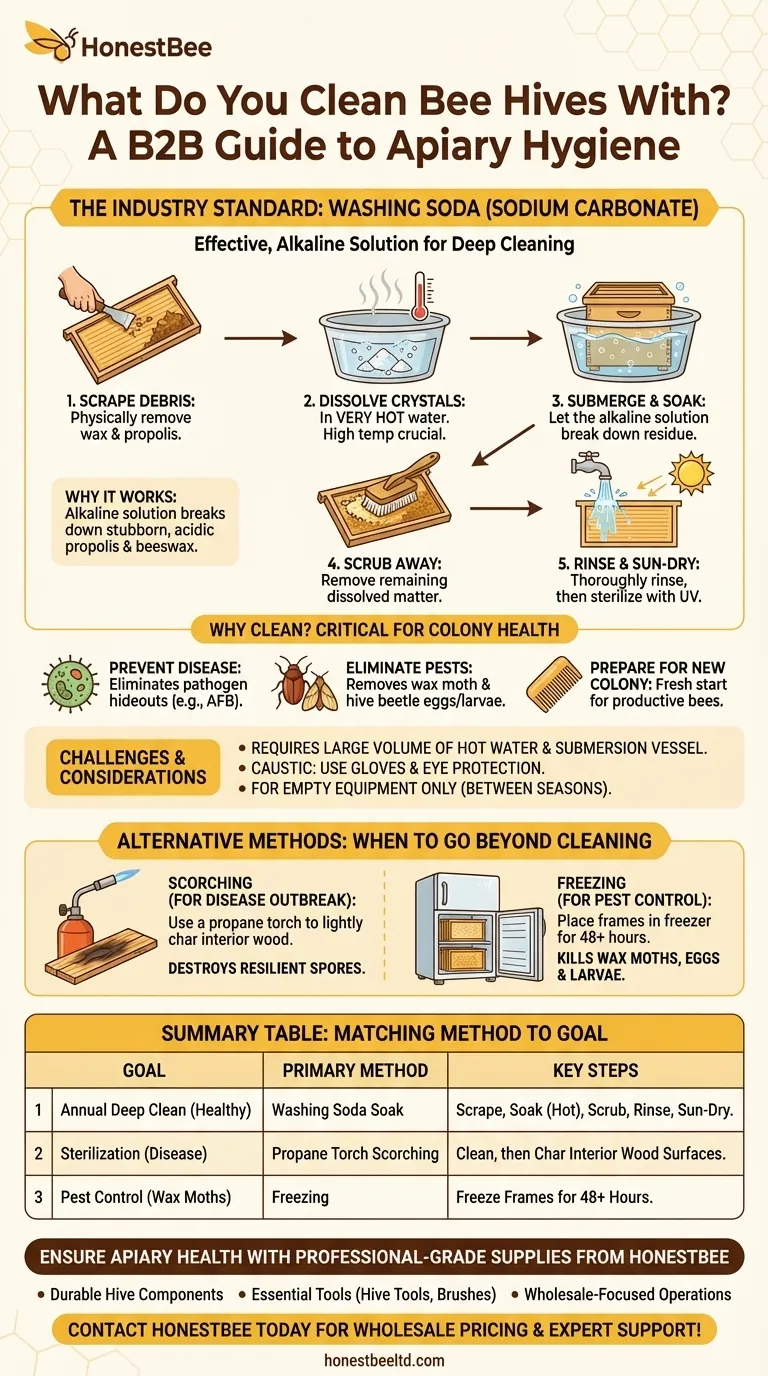
Related Products
- Professional Galvanized Hive Strap with Secure Locking Buckle for Beekeeping
- Versatile Ratchet Hive Strap with S-Hooks for Secure Fastening
- Professional Wide Blade Honey Scraper for Beekeeping and Honey Processing
- Lightweight Durable Plastic Queen Excluder Scraper for Beekeeping
- Stainless Steel Manual Honey Press with Guard for Pressing Honey and Wax
People Also Ask
- What maintenance is required for hive straps? A Guide to Cam Buckle vs. Ratchet Strap Care
- Why are hive straps important for beekeepers? Secure Your Hives Against Wind, Predators & Transport
- What are the two styles of hive straps? Choose the Right Strap for Your Hive Security
- Can straps with hook ends be used for beehives? A Guide to Secure Hive Management
- What are the types of Emlocks available? Choose the Right Strap for Hive Security

